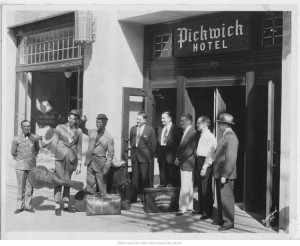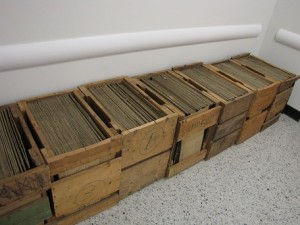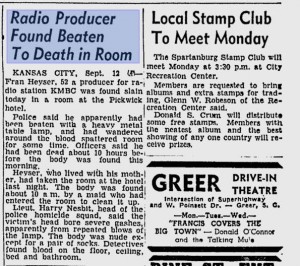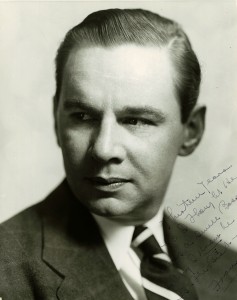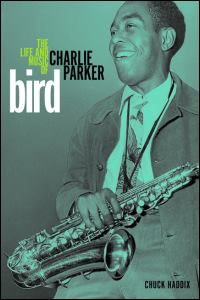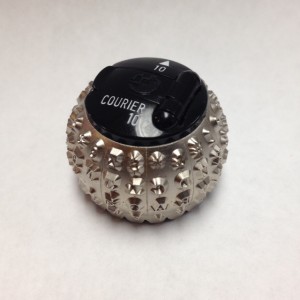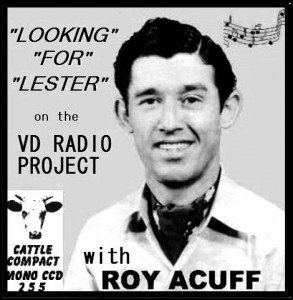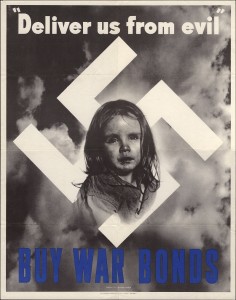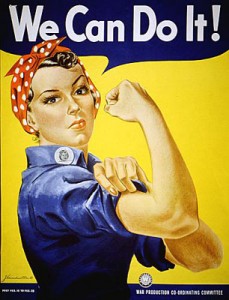In October 2012, the Marr Sound Archives completed an 18-month National Endowment for the Humanities grant to catalog and preserve the nearly 3,000 broadcast recordings in the Arthur B. Church KMBC Radio Collection. Please enjoy this series of anecdotes recounting the unusual discoveries and amusing happenings in the course of working with this collection.
This is the fourth in a series of Tales from the Archives.
Disc(h)ord on the Ranch
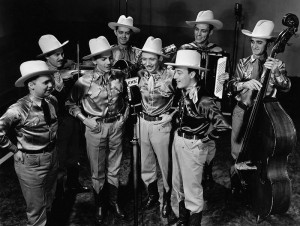
The KMBC Texas Rangers “Gentlemen in the White Hats.” Credit: Arthur B. Church KMBC Radio Collection, Marr Sound Archives, University of Missouri-Kansas City.
It seemed like everyone on the project team had discovered some new interest when working with the collection. One student became so engrossed in the developing drama on the show Vic and Sade, she hoarded all the discs to herself. For me, it was the Western swing group, The KMBC Texas Rangers. The unedited cuts of this musical octet perfectly demonstrate the unique chemistry the group had. It was hard not to be captivated by them, with names like: Clarence “Idaho” Hartman (bass fiddle), Gomer “Tenderfoot” Cool (fiddle), Joe “Monty” Strand (accordion), Herbie “Arizona” Kratoska (guitar and banjo), Fran “Irish” Mahaney (tenor), Rod “Dave” May (tenor), Robert “Captain Bob” Crawford (baritone), and Edward “Tucson” or “Tookie” Cronenbold (bass).
Garbed in Western wear, topped with classic white hats, their versatile musical repertoire included hymns, cowboy songs, novelty, and western swing. When I guest lectured for the Conservatory (UMKC), I ended with the Texas Rangers’ rendition of “Hand me down my walking cane” which inevitably got stuck in everyone’s head. It’s entertaining and hopefully served as a distraction from the terrible guest lecture they just sat through.
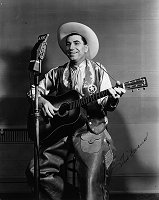
Image above: Tex Owens, the original Texas Ranger? Image courtesy of Orlene “Kit” Johnson and Irene “Kay” Dierks.
As we soon discovered, the Texas Rangers weren’t without their own drama. In their early radio programs, they were often fronted by special guest, Tex Owens. Owens, who played guitar and sang with the group on occasion, was never officially a member, but somehow left his mark in history as “The Original Texas Ranger.” There seemed to be a great deal of tension between Tex and the boys which reached its climax when Texas Governor, James V. Allred, commissioned the musical group The Texas Rangers, along with Tex Owens, as honorary members of the state’s famed law enforcement group. The honor bestowed upon the Rangers prompted them to compose an interoffice memo expressing their disappointment that Tex would be honored alongside them considering he had not been a member. The memo also included some disagreements between the group and Tex. You can read more about this controversy, see the original memo, and learn of the outcome from a blog post written by one of the project students: Tex Owens: A Case of Mistaken Identity?

